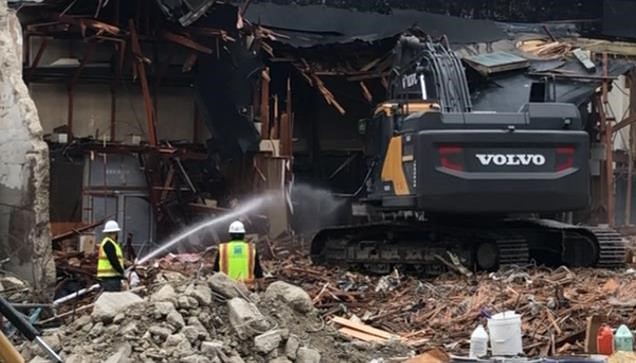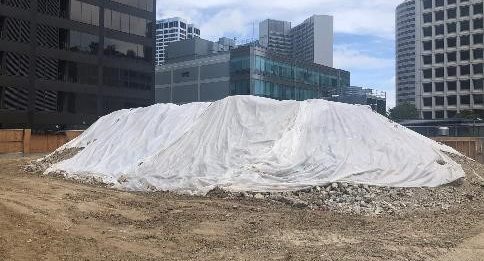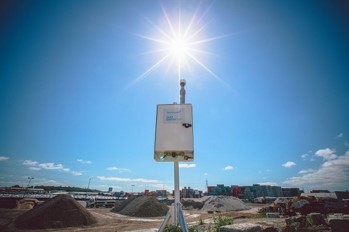Is soil going to be stockpiled on site?
Yes for initial testing, but not for the main excavation.
Soil is only going to be stockpiled on site for an initial single phase of demolition, extraction of debris and profiling of the site for identifying further below grade obstructions and soil testing.
After the initial phase described above, no stockpiling is expected as soil will be directly excavated and transported off-site without the need to be stockpiled in-between. The difference between the two phases is that during the initial phase, additional testing is conducted to more detailed information about the contents and after the results come back, a proper facility is contacted and arranged to accept the soil. After agreement from the facility, the soil will be off-hauled and disposed of.
During the main phase of construction which includes the broad excavation and off-haul of the entire site, we already have previous testing data and the site will just directly excavate and off-haul with no interim stockpiling needed.
Is stockpiling a concern for the community?
Like many construction practices, stockpiling can be done safely but if proper measures are not followed it can develop into a community concern. Dust would be the main concern if it is not mitigated properly. The site has developed a Dust Control plan and has active Dust Monitoring in place to ensure the community is cared for. Please see our Air Quality Control Plan for more information on how it works.
In summary, the community has multiple levels of dust control and protection but it all starts with proper site care. Stockpiles while being generated will initially be watered down, a minimum of 2x per day and more if conditions permit. Some excavator equipment is equipped directly with water hoses to control dust during active construction activity from start to finish. After a stockpile is created, tarps are used to cover the soil to avoid dust blowing off-site. Ultimately, the site has an active 3rd party dust monitoring system installed to measure if dust is leaving the site to ensure protocols are sufficient and then determine if additional measures need to be taken.
Dust Control Measures

Water Dampening
Water dampening, or using water to hose down the site and mitigate dust is a simple and highly effective method to keep dust from blowing off a construction site. Sites are watered a minimum 2x a day and more if conditions permit.

Tarp Covering
Stockpiles are to be covered with tarps to further effort to mitigate dust leaving the site. Tarps will also help keep stockpiles more hydrated from previous water dampening which should also help maintain dust blowing offsite.

Dust Monitoring Devices
In addition to dust control and mitigation protocols taken during the active construction process, dust monitoring devices are installed on-site to take scientific measurement of dust that is leaving the site and to send direct alerts in the event that prescribed dust levels are exceeded.
